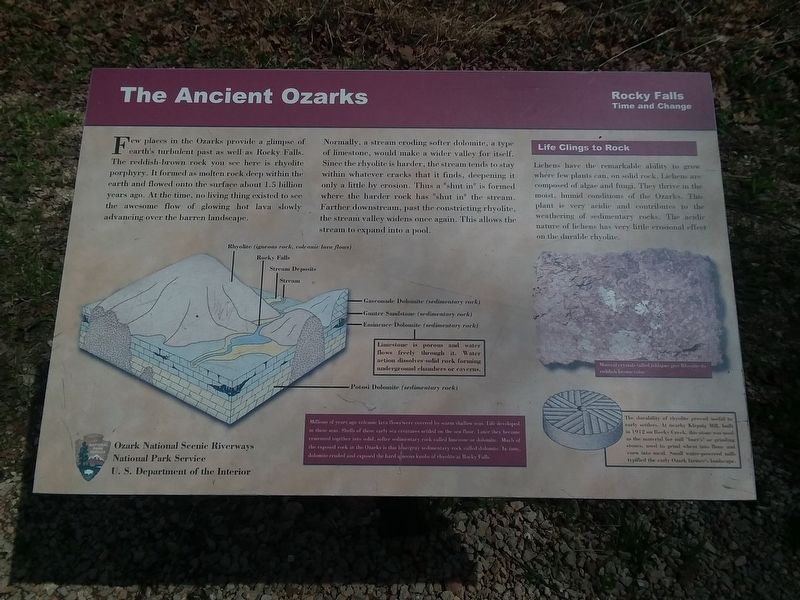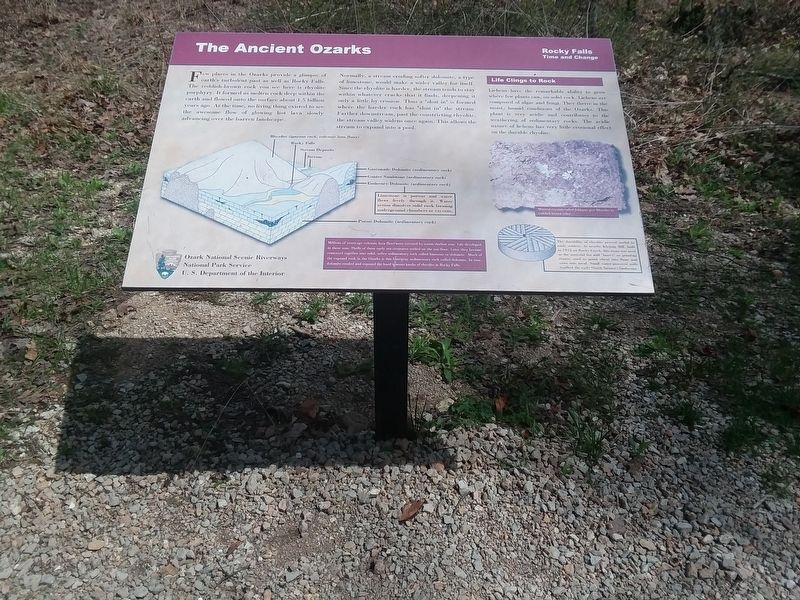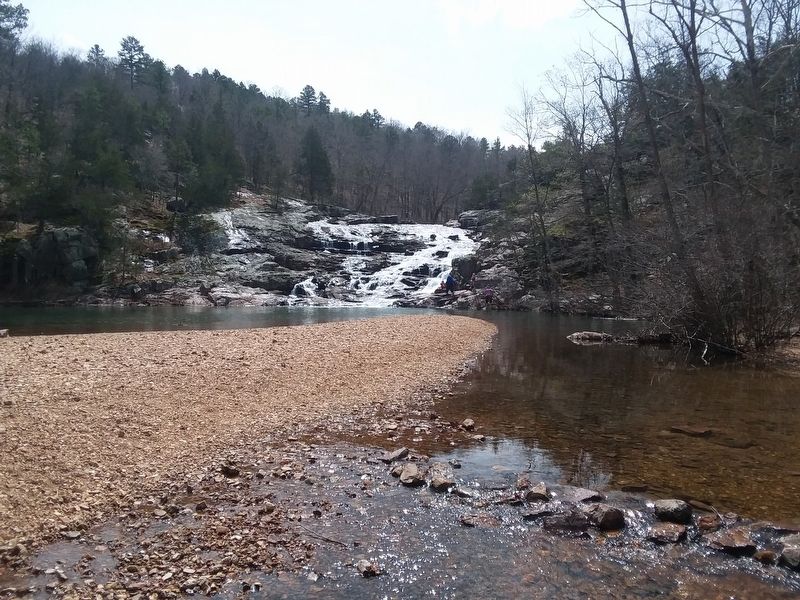The Ancient Ozarks
Rocky Falls
— Ozark National Scenic Riverway —
Few places in the Ozarks provide a glimpse of earth's turbulent past as well as Rocky Falls. The reddish-brown rock you see here is rhyolite porphyry. It formed as molten rock deep within the earth and flowed onto the surface about 1.5 billion years ago. At the time, no living thing existed to see the awesome flow of glowing hot lava slowly advancing over the barren landscape.
Normally, a stream eroding softer dolomite, a type of limestone, would make a wider valley for itself. Since the rhyolite is harder, the stream tends to stay within whatever cracks that it finds, deepening it only a little by erosion. Thus a "shut in” is formed where the harder rock has "shut in” the stream. Farther downstream, past the constricting rhyolite, the stream valley widens once again. This allows the stream to expand into a pool.
Life Clings to Rock
Lichens have the remarkabble albility to grow
where the harder rock has "shut in” the stream.
composed of algae and fungi. They thrive in the
moist. humid conditions of the Ozarks. This
plant is very acidic and contributes to the
weathering of sedimentary rocks. The acidic
nature of lichens has very little erosional effect
on the durable rhyolite.
Millions of years ago volcanic lava flows were covered by warm shallow seas. Life developed in
these seas, Shells of these early sea creatures settled on the sea floor. Later they became cemented together into solid, softer sedimentary rock called limestone or dolomite Much of the exposed rock in the Ozarks is this blue/grey sedimentary rock called dolomite In time, dolomite eroded and exposed the hard igneous knobs of rhyolite at Rocky Falls.
The durability of rhyolite proved useful to
early settlers, At nearby Klepzig Mill. Built
in 1912 on Rocky Creek, this stone was used
as the material for mill "burr's" or grinding
stones, used to grind wheat into flour and
corn into meal. Small water-powered mills
typified the early Ozark farmer's landscape.
Erected by National Park Service, U.S. Department of the Interior.
Topics. This historical marker is listed in these topic lists: Anthropology & Archaeology • Industry & Commerce • Natural Features. A significant historical year for this entry is 1912.
Location. 37° 5.683′ N, 91° 12.617′ W. Marker is in Winona, Missouri, in Shannon County. Marker is on County Road NN-526, 0.3 miles State Highway NN, on the left when traveling south. Touch for map. Marker is in this post office area: Winona MO 65588, United States of America. Touch for directions.
Other nearby markers. At least 3 other markers are within 13 miles of this marker, measured as the crow flies. Eminence (approx. 9 miles away);
Also see . . . Rocky Falls. (Submitted on December 10, 2020, by Craig Doda of Napoleon, Ohio.)
Credits. This page was last revised on December 10, 2020. It was originally submitted on December 10, 2020, by Craig Doda of Napoleon, Ohio. This page has been viewed 226 times since then and 39 times this year. Photos: 1, 2, 3. submitted on December 10, 2020, by Craig Doda of Napoleon, Ohio. • Devry Becker Jones was the editor who published this page.


